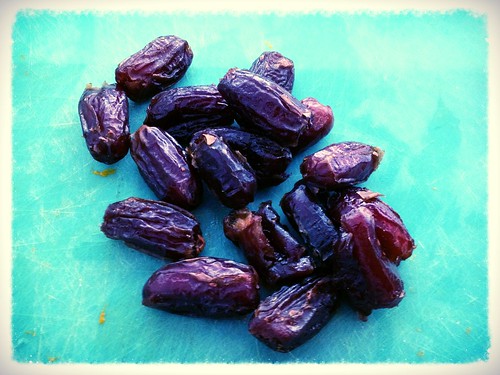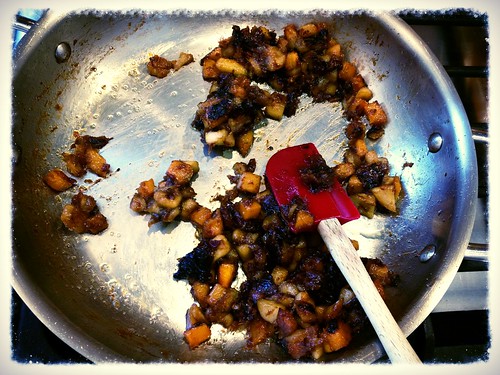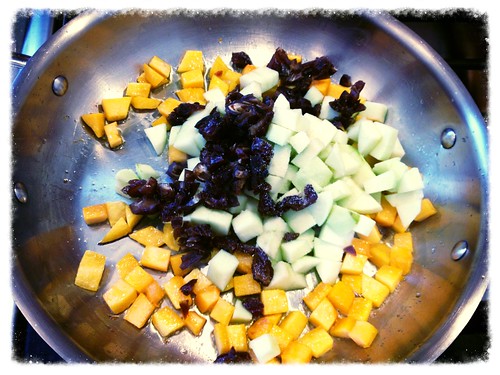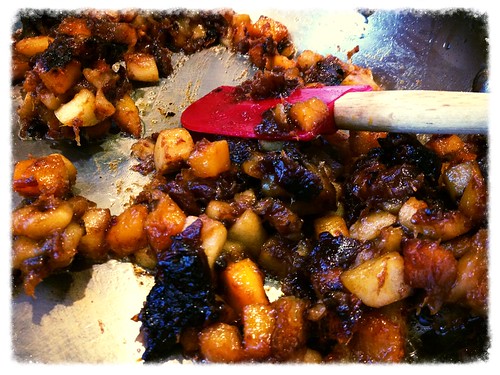Hiya friends. I meant to share this recipe in the thick of things but, well, it. was. thick. For me, at least during my first go at a Whole30, it was hard to keep up with food prep, document my journey on the blog, and share recipe-centered posts showcasing some of the gems I got to enjoy during the challenge. Here's my attempt at catch-up. I hope you'll make both the pork tenderloins and the compote - whether you're doing a Whole30 or just trying to avoid dumping a bunch of brown sugar into your dinner! THIS WAS MY BEST MEAL DURING THE ENTIRE 30 DAYS. (I can't help yelling! It's such a big deal!)
And now...
And now...
How to Whole30-ify a Recipe!
Step 1. Stick with recipes that are close to paleo. In a conventional cookbook, this step will v. likely limit you to the soups, salads, vegetable sides, and entree sections. Convenient, since those are the things you are eating on the Whole30.
Let's go through an example, shall we? A couple weeks ago I checked out from the library Ina Garten's delightful newish cookbook, Make It Ahead. It's great. I want it for keeps. Ina's an unexpectedly good resource for paleo recipes because, not only does she embrace meat and fish of all sorts, but also her overall approach emphasizes simplicity and quality. Simplicity + quality usually means you don't need a lot of ingredients. The fewer ingredients in a recipe, the easier it is to modify, and the more likely the recipe's integrity won't be compromised when you omit or swap around.
Skimming through Make It Ahead, drooling discreetly all the while, I concluded the following: with little or minimal alteration, no fewer than four starters, three lunch items, seven entrees, and seven vegetable sides could be made W30 compliant. The recipe that I kept going back to was the Herbed Pork Tenderloins with Apple Chutney. Pork tenderloins are wrapped in prosciutto (double protein! but more importantly, yum!) and 100% W30 compliant, no modifications required. The chutney, however, was another story: ten ingredients, including an off-limits cup of brown sugar, a cup of orange juice, and a bunch of dried fruit. I knew it was going to be hard to adjust, and perhaps not worth it. The pork would no doubt be delicious on its own (this was later confirmed), but some sort of compote or chutney sounded so good...
Step 2. Think outside the box. If a recipe doesn't really fit into the paleo framework, think about what it is you specifically like about that recipe and then consider what else might do the trick.
What would be good instead of an apple chutney? An herbed salsa of some sort? Magic green sauce? I really want something sweet and spicy. Wait a minute! A memory is triggered! In another much more decidedly non-paleo cookbook I have and love - Kim Boyce's Good to the Grain - there is a butternut squash compote recipe. I made it once and I don't recall it being overly sweet so maybe there's no sugar in it. Was it pears in it or apple? Let's check! (We're checking now. Dance break.) Got it: butter, squash, salt, apples, brown sugar, apple cider vinegar. Six ingredients (including salt). Only a quarter of the amount of refined sugar in Ina's recipe is called for, plus there's less fruit sugar, since the compote is equal parts squash and apple. This is totally workable. So let's get to work.
Step 3. Omit and substitute. To do this, you need to consider what the function of each ingredient is and decide whether to entirely omit or come up with an alternative if necessary.
W30 protocol forbids sugar and dairy other than ghee. First switch is to substitute ghee for butter, tablespoon for tablespoon. We also have to omit the brown sugar. In the compote recipe, what's the function of the brown sugar? Obviously, it's to make the compote sweet. Solution: substitute chopped dates. They are delicious, super sweet, and will pair nicely with butternut squash and apples. (Another decent but less delectable option would be unsweetened applesauce, permitted during W30.)
Note: you might realize once you get going that there are additional, less obvious functions served by an ingredient. In the case of the compote, it became clear that the brown sugar was going to help caramelize everything and provide a lot of moisture to the compote - it was going to become liquid itself as it melted, and then it would draw out more juices from the fruit (a la strawberries + sugar when you make strawberry shortcake topping). Solution: water. Easy peasy lemon squeezy (as my kindergartener would say).
Step 4. Give it a go!
I did. And it was crazy good. The only change I'll make next time will be to double the recipe.
Date-Sweetened Butternut Squash and Apple Compote
Adapted from Good to the Grain - original recipe online here
2 tablespoons ghee
~2 cups peeled, 1/2"-diced butternut (or other winter) squash (10 oz)
1/4 teaspoon salt
1 pound Granny Smith apples, peeled and cut into 1/2-to 3/4-inch pieces
20 pitted deglet dates or 12-15 pitted medjool dates, diced
~1 cup water
1 teaspoon apple cider vinegar or a squeeze of fresh lemon juice
Melt the ghee in a 12-inch skillet over a medium-high flame.
Add one piece of butternut squash to the pan and see if it sizzles. If it doesn't, give the pot another minute to heat up. Once hot, add the rest of the squash and salt to the pan and toss to coat with the ghee. Cook the squash for 3 minutes without stirring or moving the pan.
Toss the squash and cook for 3 minutes more, again without stirring or moving the pan. The squash should be browning on the edges.
Add the apples and dates to the pan and toss to coat in ghee for a minute. Reduce heat to low-medium (this is important especially because we are ditching the brown sugar - cooking apples over a low flame will draw out their natural sugars more effectively (think caramelized onions)). Cook for about 10 minutes, stirring every few minutes, until the apples and squash begin turning translucent. Add water, 1/4 cup at a time, if pan gets dry or the compote starts to brown quickly or stick to the pan. Increase the flame to medium and cook for about 20 minutes, tossing every 2 minutes, continuing to add water in 1/4-cup portions, until the apples and squash are dark and caramelized and the mixture is thick. Off the heat, stir in the apple cider vinegar (or a squeeze of lemon juice). Compote is best warm, straight from the pan or reheated in the microwave for a bit. It keeps well for a week but it probably won't last more than a day in your refrigerator.






No comments:
Post a Comment